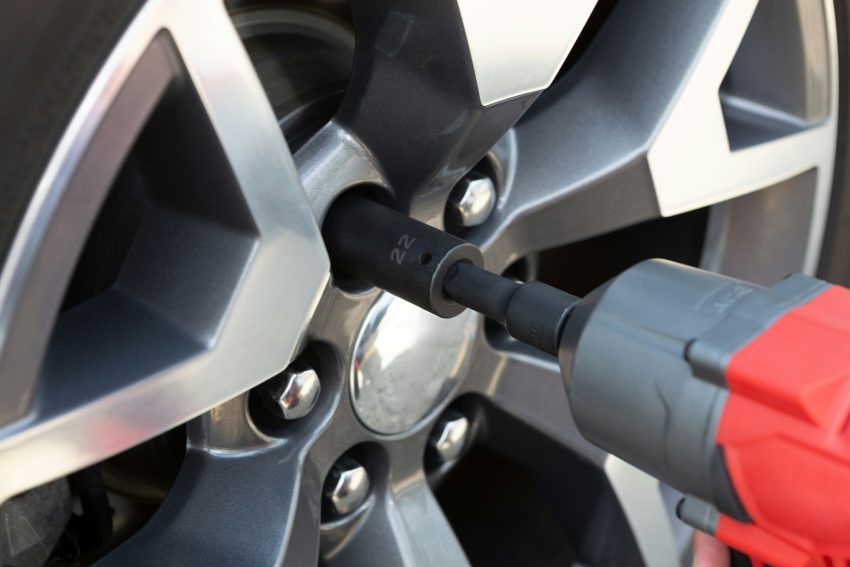Car tire maintenance is a crucial aspect of ensuring both your safety and your vehicle’s longevity. Properly maintained tires are fundamental to a smooth and safe driving experience, providing essential traction, stability, and handling.
In this article, we delve into the vital topic of extending your car tire lifespan. We’ll uncover the secrets of tire maintenance, empowering you with knowledge that ensures both your safety on the road and the longevity of your valuable investment.
Proper Tire Inflation
Properly inflated tires ensure optimal traction, handling, and fuel efficiency. When your tires are inflated to the manufacturer’s recommended pressure, they wear evenly, enhancing their lifespan. Additionally, correctly inflated tires contribute to a smoother ride and better response during emergency maneuvers, enhancing overall road safety.
How to Check and Maintain Tire Pressure
Use a reliable tire pressure gauge to measure the pressure when the tires are cold, as heat generated during driving can lead to inaccurate readings. The recommended pressure values can usually be found in the car’s manual or on a sticker inside the driver’s side door jamb. To maintain the correct pressure, use an air compressor at gas stations or invest in a portable one for home use. Check your tire pressure at least once a month, and always before long trips.
Regular Tire Rotation
Tire rotation is akin to distributing the workload evenly among your tires. Due to variations in weight distribution, front and rear tires wear differently. Front tires generally bear more weight, especially in vehicles with front-wheel drive, leading to faster wear on their treads. This not only extends their lifespan but also enhances your car’s overall performance, including traction and handling.
Recommended Tire Rotation Patterns
- Front-to-Rear Rotation: Both front tires are moved straight back to the rear, and the rear tires move forward to the front. This is suitable for non-directional tires.
- Cross-Pattern Rotation: This involves moving the front tires diagonally to the rear (left front to right rear and vice versa) and the rear tires straight to the front. This method is often used for directional tires.
For all-wheel-drive or four-wheel-drive vehicles, a full cross-pattern rotation is recommended. However, it’s essential to follow the specific recommendations outlined in your vehicle’s manual or consult a professional mechanic for the ideal rotation pattern tailored to your car.
Frequency of Tire Rotation
Regular tire rotation is typically recommended every 6,000 to 8,000 miles, or roughly every six months. However, it’s wise to check your vehicle’s manual for the manufacturer’s specific guidelines, as different car models may have unique requirements. Additionally, it’s beneficial to rotate your tires before long trips, ensuring they wear uniformly during extended drives.
Wheel Alignment and Balancing
Wheel balancing involves the equal distribution of weight around the wheel and tire assembly. Unbalanced wheels can cause vibrations that not only lead to discomfort but also accelerate tire wear. Balanced wheels ensure smooth, vibration-free driving, promoting a comfortable ride and extending the lifespan of your tires. Balanced wheels also play a vital role in enhancing the overall stability of your vehicle, especially at higher speeds, reducing stress on both tires and suspension components.
How to Maintain Proper Alignment and Balance
- Schedule regular inspections with a certified mechanic or alignment specialist. They use specialized tools to measure alignment angles and detect imbalances, ensuring early detection of issues.
- Have your wheel alignment checked if you notice steering problems, uneven tire wear, or after hitting a pothole. Regular checks, even without noticeable issues, are wise to prevent premature tire wear.
- Whenever you install new tires or replace existing ones, ensure they are balanced professionally. This practice promotes even wear from the start, maximizing tire longevity.
- Be mindful of curbs, potholes, and other obstacles on the road. Even minor impacts can knock wheels out of alignment and cause imbalances, leading to uneven tire wear if not promptly addressed.
- Combining tire rotations with alignment checks ensures that tires wear uniformly. Rotating tires at the recommended intervals prevents specific tires from bearing more weight, reducing the chances of misalignment.
Adequate Tread Depth
Tire tread depth is a critical factor in ensuring both safety and longevity. Tread depth is what provides traction, especially in adverse weather conditions like rain and snow. As tires wear down, their ability to grip the road diminishes, increasing the risk of accidents, especially during sudden stops or turns. Insufficient tread depth compromises your ability to maintain control, making it essential to monitor and maintain proper levels of tread depth.
How to Measure Tread Depth
Measuring tread depth is a straightforward process. The most common method involves using a tread depth gauge, available at auto parts stores. Alternatively, a quick and accessible method is the penny test. Insert a penny into the tire’s tread with Lincoln’s head facing down. If you can see the top of Lincoln’s head, the tread is too shallow, indicating it’s time to replace the tire.
Seasonal Considerations
Tires experience varying stresses during different seasons, requiring tailored care for each.
- Summer: Hot summer months can cause roads to become scorching, leading to increased tire heat. Check tire pressure frequently, as high temperatures can inflate tires beyond the recommended levels, risking a blowout. Also, inspect for any signs of wear or damage caused by prolonged exposure to heat.
- Winter: Cold temperatures can cause tire pressure to drop, leading to underinflation. Underinflated tires have reduced traction, especially on icy or snowy roads. Regularly check and maintain tire pressure during winter, ensuring it matches the manufacturer’s recommendations. Also, consider switching to winter tires, which offer better grip in cold conditions.
Adjustments Needed for Winter and Summer Months
- Winter Adjustments: In winter, switch to winter or snow tires. These tires have a different tread pattern designed to grip slippery surfaces, enhancing traction on snow and ice. Additionally, ensure tire treads are deep enough to provide adequate grip on slippery roads.
- Summer Adjustments: During summer, ensure tires are properly inflated. High temperatures can cause the air inside tires to expand, leading to overinflation. Overinflated tires have reduced contact with the road, affecting handling and traction. Regularly rotate tires to ensure even wear.
Conclusion: Driving Toward Tire Longevity
Regular tire maintenance, encompassing proper inflation, rotation, balancing, and seasonal adjustments, stands as the cornerstone of extending your tire’s lifespan. Prolonged tire life directly translates into enhanced safety on the roads and budgetary savings. Well-maintained tires ensure superior traction, handling, and braking, vital components for accident prevention. Moreover, by extending the life of your tires, you reduce the frequency of replacements, saving money in the long run and promoting a sustainable approach to vehicle maintenance.
So, remember, a little care today can pave the way for many miles of safe and enjoyable travels tomorrow.


